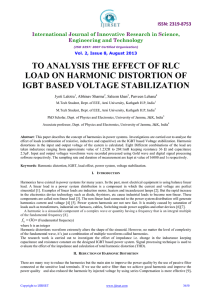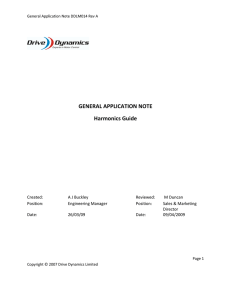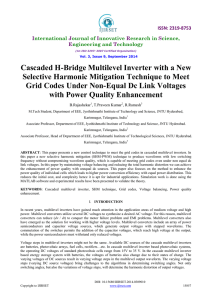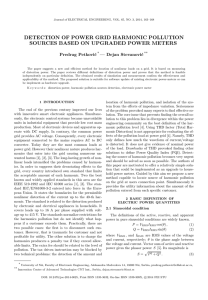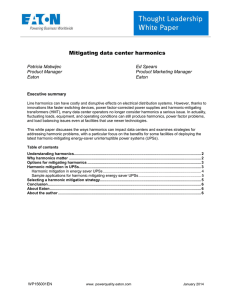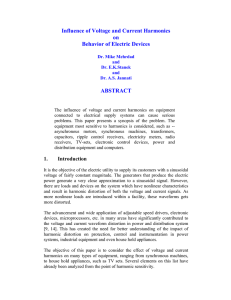Harmonic Pollution - CHK Power Quality
advertisement
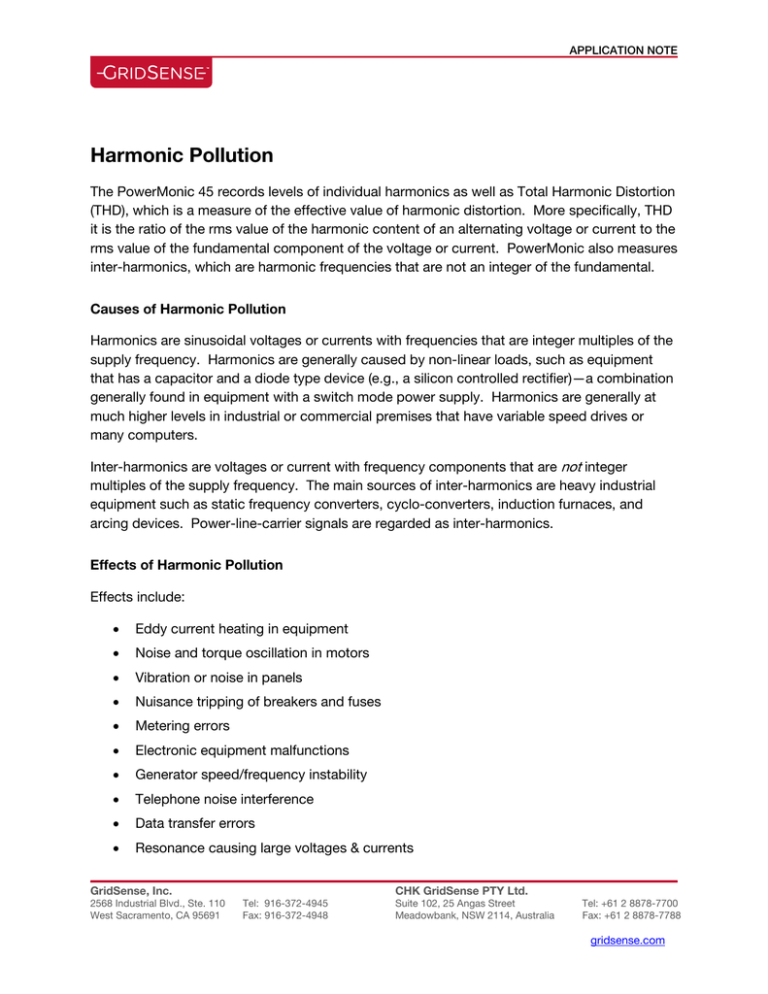
APPLICATION NOTE Harmonic Pollution The PowerMonic 45 records levels of individual harmonics as well as Total Harmonic Distortion (THD), which is a measure of the effective value of harmonic distortion. More specifically, THD it is the ratio of the rms value of the harmonic content of an alternating voltage or current to the rms value of the fundamental component of the voltage or current. PowerMonic also measures inter-harmonics, which are harmonic frequencies that are not an integer of the fundamental. Causes of Harmonic Pollution Harmonics are sinusoidal voltages or currents with frequencies that are integer multiples of the supply frequency. Harmonics are generally caused by non-linear loads, such as equipment that has a capacitor and a diode type device (e.g., a silicon controlled rectifier)—a combination generally found in equipment with a switch mode power supply. Harmonics are generally at much higher levels in industrial or commercial premises that have variable speed drives or many computers. Inter-harmonics are voltages or current with frequency components that are not integer multiples of the supply frequency. The main sources of inter-harmonics are heavy industrial equipment such as static frequency converters, cyclo-converters, induction furnaces, and arcing devices. Power-line-carrier signals are regarded as inter-harmonics. Effects of Harmonic Pollution Effects include: Eddy current heating in equipment Noise and torque oscillation in motors Vibration or noise in panels Nuisance tripping of breakers and fuses Metering errors Electronic equipment malfunctions Generator speed/frequency instability Telephone noise interference Data transfer errors Resonance causing large voltages & currents GridSense, Inc. 2568 Industrial Blvd., Ste. 110 West Sacramento, CA 95691 CHK GridSense PTY Ltd. Tel: 916-372-4945 Fax: 916-372-4948 Suite 102, 25 Angas Street Meadowbank, NSW 2114, Australia Tel: +61 2 8878-7700 Fax: +61 2 8878-7788 gridsense.com Effects of inter-harmonics include: Distortion of power-line-carrier signals Flicker of flourescent and arc lighting Flicker of computer display devices. Required Standard (Australia) Levels of harmonic distortion should meet the compatibility levels of AS/NZS61000.3.6 (Table 1). The standard also allows a distributor to record harmonic levels before and after the connection of a new installation or load to ensure that the customer does not exceed the emission limits. Table 1. Compatibility levels for harmonic voltages (in percent of the nominal voltage) in LV and MV power systems Odd harmonics Odd harmonics non multiple of 3 multiple of 3 Order Even Harmonics Harmonic voltage % Order H Harmonic voltage % Order h H Harmonic voltage % 5 6 3 5 2 2 7 5 9 1.5 4 1 11 3.5 15 0.3 8 0.5 13 3 21 0.2 10 0.5 17 2 >21 0.2 12 0.5 19 1.5 >12 0.2 23 1.5 25 1.5 >25 0.2+ 1.3 (25/h) 0.2 NOTE – Total harmonic distortion (THD): 8% Case in Point A plant was having problems with circuit breakers tripping randomly in the early morning hours. A PowerMonic 45 configured to record harmonics was used to determine that voltage THD levels were sometimes nearing 10%—well above allowable compatibility levels (Fig. 1). It was believed that harmonics were causing the circuit breakers to trip. Harmonic Pollution 2 A variable speed drive (VSD) on the premise controlled a large motor that was started at 2 AM each morning. When the VSD was confirmed as the problem’s source, the manufacturer was contacted to fix the drive. When that was done, the circuit breakers no longer tripped. Figure 1. Graph showing excessive harmonics at the circuit breaker panel Harmonic Pollution 3





